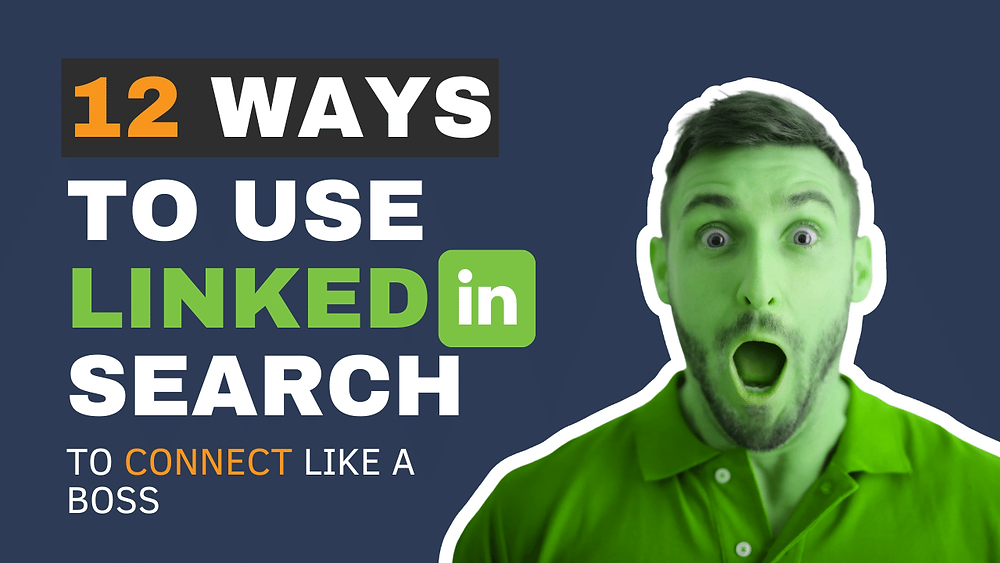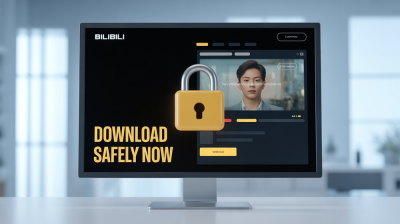Searching for someone on LinkedIn can be a game-changer for networking, job hunting, or reconnecting with old colleagues. With over 900 million users worldwide, the platform has become the go-to for professionals in every industry. But how do you effectively navigate this vast network? In this post, we'll dive into simple yet powerful strategies to help you find the right connections quickly and efficiently.
Creating a LinkedIn Account

Before you can start searching for people on LinkedIn, you need an account. The good news? It’s free and easy to set up! Here’s a step-by-step guide to get you started:
- Visit the LinkedIn Website: Go to www.linkedin.com or download the LinkedIn app from your app store.
- Click on "Join now": You’ll see this option on the homepage. Just click it to begin the registration process.
- Enter Your Information: You’ll need to provide your full name, email address, and a password. Make sure to use a professional email that you check regularly.
- Confirm Your Email: LinkedIn will send you a confirmation email. Click the link in that email to verify your account.
- Complete Your Profile: Once logged in, fill out your profile with your work experience, education, and skills. The more detailed your profile, the easier it is for others to find you!
- Add a Profile Picture: Choose a professional photo. Profiles with photos receive far more views than those without.
- Connect with Others: Start adding connections by searching for colleagues, classmates, or industry professionals. LinkedIn will also suggest people based on your profile.
After creating your account, take some time to explore the platform. Check out the “How To” guides and resources LinkedIn offers to maximize your experience. Remember, the more you engage with the platform, the easier it will be to search for and connect with others in your field!
Also Read This: How to Professionally Message a Recruiter on LinkedIn After Applying
3. Understanding LinkedIn Search Features

LinkedIn is not just a networking platform; it’s a powerful search engine specifically designed for professionals. Understanding its search features can massively improve your ability to find the right people. Let's break this down!
First off, LinkedIn offers multiple filters that can refine your search results. You can narrow down your search by:
- Location: This is crucial if you're looking for someone in a specific city or country.
- Current company: If you know where they work at present, this filter can save you a lot of time.
- Industry: This helps to find professionals within a specific sector, like tech, healthcare, or finance.
- Connections: You can search for 1st, 2nd, or 3rd-degree connections, which can help in reaching out through mutual contacts.
- Keywords: This is powerful! You can search by job titles, skills, or even names.
Another notable feature is the search bar at the top of your LinkedIn homepage. By typing in relevant keywords, LinkedIn will suggest profiles, jobs, or even companies that match your search. This isn't just a random suggestion; it's powered by algorithms that analyze user activity, making your search more tailored.
Did you know that you can also save your searches? By clicking on the "Save search" option, you can revisit your search anytime without having to re-enter all your criteria. Plus, LinkedIn can notify you of new profiles that match your saved search criteria, keeping you in the loop!
Finally, don't underestimate the Advanced Search option. This allows for a more granular search where you can combine multiple filters. It’s especially helpful when you’re looking for specific skill sets or job titles.
Also Read This: How to View Saved Jobs on LinkedIn Quickly
4. Using Basic Search Techniques
Now that you're familiar with LinkedIn's search features, let’s dive into some basic yet effective search techniques. Mastering these can drastically improve your experience and results.
First, start with specific keywords. Instead of searching for “marketing,” try “digital marketing specialist” to target a particular role. This reduces the number of irrelevant profiles and increases your chances of finding the right person quickly.
Next, utilize quotation marks for exact matches. For instance, if you’re searching for “project manager,” placing it in quotes tells LinkedIn to fetch profiles that have this exact phrase, rather than just any profile that contains the words “project” or “manager.”
Another trick is to use the AND and OR operators. For example, typing “software engineer AND Python” will yield profiles that include both terms. Conversely, “software engineer OR developer” will show profiles that have either role, broadening your search if you're keeping your options open.
By combining these techniques, you can create more complex queries that yield better results. Here’s a simple example:
“data analyst” AND “SQL” AND “New York”
This search will return profiles of data analysts skilled in SQL who are located in New York.
Lastly, don’t forget to check the search results page for additional filters. LinkedIn often shows suggestions related to your search, which can lead you to profiles you might not have thought to look for. Engage with these filtered results, and don’t hesitate to reach out to individuals who catch your eye!
Also Read This: How to Share Your Microsoft Certification on LinkedIn
5. Advanced Search Options for Professionals
Finding someone on LinkedIn can sometimes feel like searching for a needle in a haystack, especially if you’re not using all the tools at your disposal. That's where advanced search options come into play! These options allow you to refine your search to pinpoint exactly who you're looking for. Here’s how to make the most of them:
- Keywords: Think about the specific skills, job titles, or companies related to the person you’re searching for. Use phrases like "marketing manager" or "software engineer" to narrow down your search results.
- Location: If you know the city or region where the person is based, include that in your search. For example, search for "data analyst in New York" to find professionals in that specific area.
- Current Company: If you know where the person works, you can filter results by their current employer. This is especially useful for finding former colleagues or industry peers.
- Past Company: Maybe you’re looking for someone you used to work with at a previous employer. Use this field to refine your search even further.
- Industry: Don’t forget to specify the industry! This will help you filter out irrelevant profiles and focus on professionals who are in the same field.
Using these advanced search options can significantly enhance your ability to find the right person. Plus, the more specific your search, the more relevant the results will be. It’s like having a superpower that gives you the edge in your networking game!
Also Read This: How to Add Projects to LinkedIn and Highlight Your Work
6. Leveraging Filters for Better Results
Once you've conducted an initial search, the next step is to leverage LinkedIn's filters to further refine your results. This is crucial for ensuring that the profiles you view are not just relevant, but the best matches for your needs. Here’s how to effectively use filters:
- Connections: Filter your results by 1st, 2nd, or 3rd-degree connections. This can help you find someone you might already have a connection with, making it easier to reach out.
- School: Did you attend the same university? Using this filter allows you to connect with fellow alumni, which can be a great icebreaker in your outreach.
- Language: If you're looking for someone who speaks a particular language, this filter helps ensure that your search yields only those who meet your language criteria.
- Profile Language: This is particularly useful if you’re targeting individuals in different countries. You can find professionals who have set their profiles in a specific language, making communication smoother.
- Posted Content: If you want to see who is engaging with specific topics or industry conversations, use this filter to find individuals who have recently shared relevant content.
Combining these filters with your advanced search options can create a powerful toolkit for finding exactly the right person. It’s all about refining your approach until you hit the jackpot. So, the next time you’re on LinkedIn, don’t just rely on a simple name search; dive into those filters and advanced options to discover a world of networking possibilities!
Also Read This: How to Showcase a Side Endeavor on LinkedIn to Highlight Your Skills
7. Connecting with People You Find
Once you've identified potential connections on LinkedIn, the next step is to reach out and connect with them. But how do you do this effectively? A well-crafted connection request can make all the difference. Here are some strategies to enhance your outreach:
- Personalize Your Message: When sending a connection request, always include a personalized message. Mention how you found them, whether through a mutual connection, a shared interest, or a specific post. For example, “Hi [Name], I came across your post on [specific topic] and found it really insightful. I’d love to connect and exchange ideas!”
- Be Clear About Your Intentions: Let them know why you want to connect. Are you looking for advice in their field, or do you share a common interest? Providing context can make them more inclined to accept your request.
- Keep It Short and Sweet: People appreciate brevity. A concise message demonstrating genuine interest is more likely to grab attention. Aim for a few sentences that encapsulate your purpose.
- Follow Up: If they accept your request, send a thank-you message. It’s a great way to start a conversation and establish rapport. You might say, “Thanks for connecting! I’d love to hear more about your work in [their field].”
Remember, connecting on LinkedIn isn’t just about growing your network—it's about fostering meaningful professional relationships. Don't be shy to reach out to those whose work you admire or who you think could offer valuable insights into your career.
8. Best Practices for Networking on LinkedIn
Networking on LinkedIn isn’t just about sending connection requests; it’s about building relationships that can lead to career opportunities and collaborations. Here are some best practices to ensure your networking efforts are effective:
- Engage with Content: Don’t just be a passive observer. Engage with posts by liking, commenting, and sharing. This not only puts you on the radar of your connections but also demonstrates your interest in industry trends.
- Join Relevant Groups: LinkedIn offers numerous groups based on specific interests and industries. Joining these groups can help you connect with like-minded professionals and participate in discussions that can elevate your profile.
- Attend Virtual Events: LinkedIn often hosts webinars and events. Participating in these can provide valuable insights and new connections. After attending, follow up with other attendees or speakers to deepen your networking.
- Regularly Update Your Profile: An up-to-date profile makes you more discoverable. Regularly add new skills, experiences, and achievements to keep your profile fresh and relevant.
- Be Authentic: Authenticity goes a long way in networking. Share your experiences, challenges, and successes. This authenticity can resonate with others and foster deeper connections.
Networking on LinkedIn should feel natural and mutually beneficial. Focus on building relationships rather than just expanding your contact list, and you'll find that the connections you make can lead to incredible opportunities.
 admin
admin








